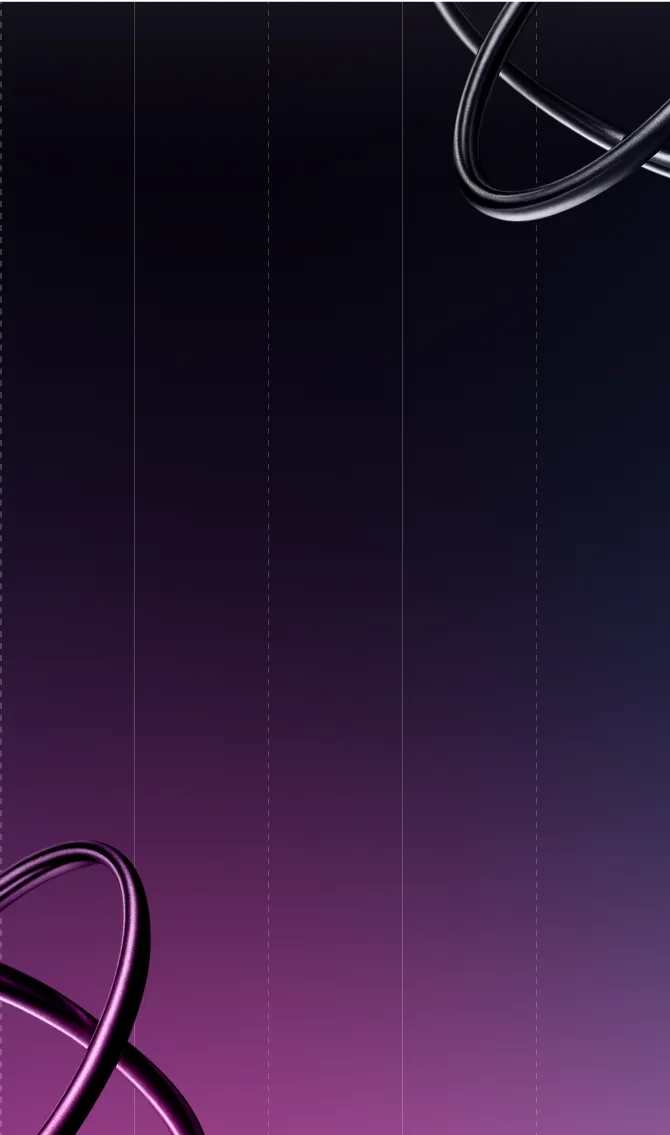Managing Open Invoices: Strategies to Reduce Days Outstanding





Open invoices are a big deal for companies. 50% of US B2B invoices are currently overdue. Across S&P 1500 companies, $707 billion sits locked in working capital that could otherwise fund operations and growth. Every unpaid invoice represents cash you've earned but can't access to run your business.
Finance teams face the same general constraints: payroll needs to be covered, vendors need to be paid, and growth requires investment—but customers take 30, 60, sometimes 90 days to pay for work that's already complete. Managing hundreds of open invoices while trying to forecast cash flow creates real operational limitations.
Finance teams that systematically manage their open invoices cut Days Sales Outstanding to under 30 days—compared to an overall median of 38 days. Three practices drive this improvement: generating accurate invoices customers can pay easily, tracking them so nothing falls through the cracks, and following up strategically to maintain relationships while accelerating payment.
Open invoices appear as assets on your balance sheet under Accounts Receivable, which makes your working capital look healthy on paper. But working capital includes AR that hasn't converted to cash yet— because you can't use these assets to pay bills despite their accounting value. This means that your financial statements show money you've earned, but your bank account shows what you can actually spend.
Cash flow constraints from slow-paying invoices cause operational problems. You might be profitable on paper while unable to make payroll or pay suppliers because too much capital sits tied up in unpaid invoices.
If you’re processing high invoice volumes, the challenges scale to be even larger. If you're issuing hundreds or thousands of invoices monthly, even small improvements in collection timing translate to substantial working capital improvements. A company with $2 million in monthly receivables that cuts DSO from 45 to 30 days frees up approximately $1 million in working capital—money that was earned but inaccessible.
There is another practical reason to close invoices sooner. Bad debt risk increases significantly with invoice age. Invoices unpaid after 90 days have a much higher likelihood of never being collected at all. Every day an invoice sits open, your chances of collecting the full amount decrease while the administrative cost of collection increases.
Most late payments don't stem from customers intentionally avoiding payment. The three most common causes are customer cash flow constraints, internal approval process delays, and simple forgetfulness (customers who genuinely didn't realize payment was due or overlooked the invoice in their queue).
Invoice errors create a significant portion of payment delays. Billing mistakes, missing information, and purchase order mismatches give customers legitimate reasons to hold payment while they sort out discrepancies. These errors commonly stem from incorrect pricing, missing invoice numbers or PO references, wrong billing addresses, and line items that don't match what was actually delivered or contracted.
When invoices contain errors, the payment process stops completely. The customer's accounts payable team can't process payment until discrepancies are resolved, which requires back-and-forth communication, documentation review, and often involves multiple departments. A single typo in a PO number can delay payment by weeks!
Automation significantly reduces these errors. When invoice generation connects directly to your contract management or order systems, data flows automatically without manual entry. It also eliminates transcription errors, ensures PO numbers match perfectly, and validates billing amounts against agreed terms before the invoice ever reaches the customer.
Manual approval workflows create internal bottlenecks that extend payment cycles unnecessarily. While automated systems route invoices through approval chains in days, manual processes involving email forwarding, printed signatures, and desk-to-desk handoffs can take weeks.
The lack of systematic follow-up compounds these other issues. Without automated reminders and escalation workflows, overdue invoices can slip through the cracks. A team member needs to spend time manually reviewing aging reports, identifying which customers need outreach, drafting communications, and tracking responses—work that is well handled by automation.
Invoice accuracy starts with including complete information customers need to process payment. Every invoice should contain your business name and contact information, the customer's billing details, a unique invoice number for tracking, the invoice date and clear due date, detailed line items describing what was delivered, the total amount due including any taxes, and multiple payment options with instructions for each method.
Software tools like QuickBooks and Adobe will provide comprehensive breakdowns of essential invoice components. Missing any of these elements creates friction in the payment process—customers need to reach out for clarification, accounts payable teams need to hunt down missing information, and payment gets delayed.
Automated invoice generation eliminates timing delays and ensures consistency. Instead of someone manually creating invoices at month-end or after project completion, systems generate invoices automatically based on triggers: when a contract milestone is reached, when timesheets are approved, or on scheduled dates for recurring services. This means invoices reach customers immediately when payment becomes due rather than days or weeks later.
The consistency of automated tools has other benefits. Delivery timing affects payment speed. Salesforce research on invoice processing shows that invoices sent Tuesday through Thursday mornings get processed faster than those arriving Friday afternoon or Monday morning. Understanding your customer's accounts payable cycle matters too—many companies process payments on specific schedules, and aligning your invoice delivery with their workflow reduces delays.
Multi-channel delivery gives customers flexibility in how they receive and access invoices. Email with PDF attachments remains the primary channel, but customer self-service portals provide 24/7 access to invoice history and payment options. For enterprise customers with automated systems, EDI integration enables direct system-to-system invoice transmission. Stripe notes that providing detailed payment instructions improves payment timing—the easier you make it to pay, the faster customers complete the transaction.
Days Sales Outstanding provides the clearest measure of how efficiently you're converting sales to cash. The Credit Research Foundation reports a median DSO of 36.8 days across industries, while JP Morgan's analysis of S&P 1500 companies shows an average of 50.5 days. B2B services companies typically fall in the 45-60 day range. These benchmarks can be useful for getting a sense of how much improvement you are likely to make from your current state.
AR aging schedules break down receivables by how long they've been outstanding, typically bucketed into: current (not yet due), 1-30 days past due, 31-60 days, 61-90 days, and over 90 days. This view can help you see patterns in customer payment behavior and identify which accounts require immediate attention. For example, invoices aging beyond 90 days carry significantly higher risk of becoming uncollectible.
Rather than treating all overdue accounts the same, effective teams segment customers into risk levels based on payment history. One easy scheme to try is green/yellow/red. Green-level customers with consistent on-time payments receive simple automated reminders. Yellow-level customers with occasional delays get more frequent touchpoints. Red-level customers with regular late payments require intensive monitoring and potentially stricter terms. This allows teams to focus their efforts where they have the largest effect.
Real-time dashboards provide visibility into invoice status without manual report generation. Instead of pulling aging reports and cross-referencing payment systems, automated tracking shows which invoices are delivered, viewed, paid, or overdue. Exception alerts flag unusual patterns—a typically reliable customer suddenly going silent, or invoices sitting unviewed beyond normal timeframes—enabling proactive intervention before accounts become seriously delinquent.
Pre-due reminders sent 5-7 days before payment is due prevent a significant portion of late payments. Stripe's research on payment reminders shows these proactive communications give customers time to process invoices through their approval workflows and resolve any questions before the due date passes. Many late payments stem from customers simply not realizing payment was due rather than intentional delays.
Once invoices become overdue, systematic escalation maintains pressure without damaging relationships. The typical sequence for collection letters that we recommend starts with a gentle reminder 7 days after the due date, followed by a more direct message at 15 days, and a formal payment demand at 30 days. This will escalate to collections from here. Each communication should become progressively more direct while remaining professional.
Early payment incentives accelerate cash collection for customers with available capital. The 2/10 Net 30 structure—offering a 2% discount for payment within 10 days while maintaining net 30 terms—gives customers a financial reason to prioritize your invoice. For a $10,000 invoice, the $200 discount costs you less than the working capital value of receiving payment 20 days earlier.
Providing multiple payment methods removes friction from the payment process. ACH transfers, credit cards, wire transfers, and online payment portals each appeal to different customer preferences and internal processes. The easier you make payment, the faster customers complete the transaction.
Automation drives some of the most significant DSO improvements. AI-powered systems predict payment behavior with increasing accuracy. Models can forecast payment timing based on customer history, invoice characteristics, and external factors. This enables finance teams to intervene proactively with high-risk accounts before invoices become seriously overdue.
These systems are able to update automated reminder systems based on customer behavior patterns. Rather than generic reminders sent to everyone at the same intervals, intelligent systems adjust timing and messaging based on what historically works for each customer segment. This personalization improves response rates without increasing manual effort.
The measurable impact of systematic invoice management shows in both cost and time metrics. Research from AIMultiple and analysis from Forrester document 60-80% reductions in invoice processing costs. We’ve seen processing time dropping from weeks to days, while AI validation achieves very high accuracy rates.
For businesses processing thousands of invoices monthly, automation makes previously impractical workflows viable. Weekly billing cycles that would overwhelm manual processes become routine. Customer portals provide self-service capabilities that reduce support burden while giving customers 24/7 access to their account status and payment history.
As a next step, consider comparing leading AR automation platforms and find the right solution for your operational needs. You can see our guide to Best Automated Accounts Receivable Software for a good starting point.
Open invoices represent a working capital problem that compounds at scale. The practices that reduce DSO—accurate invoice generation, systematic tracking, strategic follow-up, and customer segmentation—become increasingly difficult to execute manually as volume grows. Finance teams that implement these practices systematically, particularly through automation, free capital trapped in receivables while reducing the administrative burden on their teams.
What are open invoices and why do they matter for cash flow?
Open invoices are unpaid customer invoices that appear as assets under Accounts Receivable on your balance sheet, but haven't converted to cash yet. This distinction matters because while your financial statements show money you've earned, your bank account shows what you can actually spend. Currently, 50% of US B2B invoices are overdue, with $707 billion locked in working capital across S&P 1500 companies. You might be profitable on paper while unable to make payroll or pay suppliers because too much capital sits tied up in unpaid invoices. A company with $2 million in monthly receivables that cuts DSO from 45 to 30 days frees up approximately $1 million in working capital—money that was earned but inaccessible. Bad debt risk also increases significantly with invoice age, with invoices unpaid after 90 days having a much higher likelihood of never being collected at all.
Why do invoices go unpaid, and how can I prevent payment delays?
Most late payments don't stem from customers intentionally avoiding payment. The three most common causes are customer cash flow constraints, internal approval process delays, and simple forgetfulness. Invoice errors create a significant portion of payment delays—billing mistakes, missing information, and PO mismatches give customers legitimate reasons to hold payment while sorting out discrepancies. When invoices contain errors, the payment process stops completely until discrepancies are resolved. Automation significantly reduces these errors by connecting invoice generation directly to contract management systems, eliminating transcription errors and ensuring PO numbers match perfectly. Every invoice should contain complete information: business name and contact details, customer billing information, unique invoice number, dates, detailed line items, total amount with taxes, and multiple payment options. Automated invoice generation ensures consistency and delivers invoices immediately when payment becomes due rather than days or weeks later.
How can I reduce Days Sales Outstanding (DSO)?
Finance teams that systematically manage open invoices cut DSO to under 30 days compared to an overall median of 38 days. Pre-due reminders sent 5-7 days before payment is due prevent a significant portion of late payments by giving customers time to process invoices through approval workflows. Once invoices become overdue, systematic escalation maintains pressure without damaging relationships: gentle reminder 7 days after due date, more direct message at 15 days, formal payment demand at 30 days. Early payment incentives like 2/10 Net 30 give customers financial reasons to prioritize your invoice—for a $10,000 invoice, the $200 discount costs less than the working capital value of receiving payment 20 days earlier. Providing multiple payment methods removes friction. Automation drives the most significant improvements through AI-powered systems that predict payment behavior, forecast timing based on customer history, and enable proactive intervention with high-risk accounts before invoices become seriously overdue.
What information should every invoice include to get paid faster?
Every invoice must contain complete information customers need to process payment without delays: your business name and contact information, customer's billing details, unique invoice number for tracking, invoice date and clear due date, detailed line items describing what was delivered, total amount due including taxes, and multiple payment options with instructions. Missing any element creates friction—customers need to reach out for clarification, accounts payable teams hunt down missing information, and payment gets delayed. Delivery timing also affects payment speed, with research showing invoices sent Tuesday through Thursday mornings get processed faster than those arriving Friday afternoon or Monday morning. Multi-channel delivery gives customers flexibility: email with PDF attachments as primary channel, customer self-service portals for 24/7 access, and EDI integration for enterprise customers with automated systems. The easier you make it to pay, the faster customers complete the transaction.
How does automation improve invoice management and reduce DSO?
Automation transforms invoice management through multiple mechanisms that reduce errors, accelerate payment, and free finance teams for strategic work. Research documents 60-80% reductions in invoice processing costs, with processing time dropping from weeks to days. Automated invoice generation creates invoices immediately based on triggers like contract milestones or approved timesheets rather than waiting for manual month-end processing, preventing transcription errors and missing PO numbers that delay payment. AI-powered systems predict payment behavior with increasing accuracy, forecasting timing based on customer history and enabling proactive intervention with high-risk accounts before invoices become seriously overdue. Intelligent reminder systems adjust timing and messaging based on what historically works for each customer segment, improving response rates without increasing manual effort. For businesses processing thousands of invoices monthly, automation makes previously impractical workflows viable—weekly billing cycles become routine while customer portals provide self-service capabilities that reduce support burden.
Eliminate manual bottlenecks, resolve aging invoices faster, and empower your team with AI-driven automation that’s designed for enterprise-scale accounts receivable challenges.

